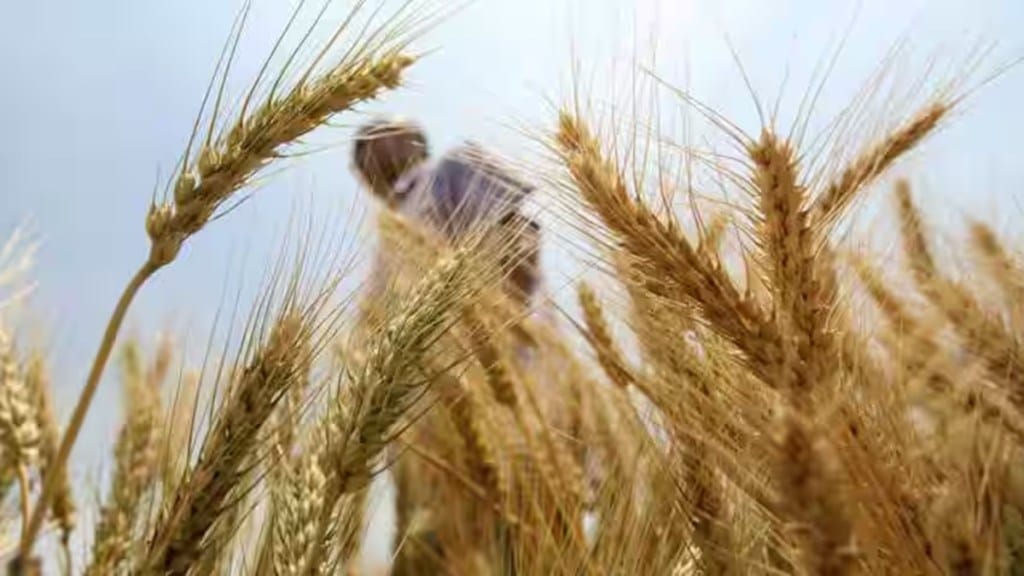The country is expected to experience ‘above normal’ temperatures in March across regions following a warmer February, India Meteorological Department (IMD) on Friday stated. Higher temperatures next month, crucial for grain formation, may adversely impact the winter or rabi crops – wheat, chana and mustard.
“Both maximum and minimum temperatures in most parts of the country would be above-average in March”, DS Pai,senior scientist, IMD said in a briefing. Experts said higher temperatures in the later part of March, the harvesting period for the winter crops may impact crop yield.
Wheat harvest in the last three years had been adversely impacted by excessive heat prior to harvesting of crop and unseasonal rains in March.
“During the upcoming hot weather season – March to May, above-normal maximum temperatures are most likely over most parts of the country, except over southern parts of Peninsular India, and isolated pockets of Northeast India where normal to below-normal maximum temperatures are likely,” Pai said adding that impact on crops is being assessed by agriculture ministry.
Above-normal heatwave days are expected over Rajasthan, Gujarat, Haryana, Punjab, Madhya Pradesh, Maharashtra, Uttar Pradesh, Bihar, Jharkhand, West Bengal, Odisha, Chhattisgarh, Telangana, Andhra Pradesh, and northern parts of Karnataka during March to May 2025
According to IMD, average rainfall across the country last month was 10.9 millimetres (mm), which was the 18th lowest since 1901 and the 5th lowest since 2001. “Rainfall over South peninsular India (1.2 mm) was the 10th lowest since 1901 and the 4th lowest since 2001”, the weather department said.
The department stated that cold wave conditions in February were mostly absent across northern plains and on most dates night temp was warmer than normal in most parts across north and central India.
In terms of rainfall this month, below-normal precipitation was received over most parts of the country. Average rainfall during January-February has been below 59% of the benchmark – long period average (LPA) AT 15.9 MM compared to normal range of 38.9 MM.
El nino unlikely to develop in next monsoon
The met department stated that ‘La Niña’ conditions are likely to weaken during the upcoming season and turn to neutral conditions during March-May 2025, while ‘El Nino’ conditions are unlikely to develop during forthcoming monsoon months (June-September).
“There is a low probability of El Nino conditions developing in the next monsoon season,” Pai said.
In 2024, the country received 8% more rainfall against the benchmark or ‘above normal’ range during the south-west monsoon which had boosted kharif and rabi sowings.
Meanwhile, the water levels in the country’s 155 major reservoirs on Thursday was 19% up on year according to the Central Water Commission. The reservoir levels are now 13% above the last ten-years average.
Higher temperature in March may hit wheat crop
Temperature ruling above the normal range in the key growing regions this month and IMD predicting higher temperature in March and recent rains in parts of Madhya Pradesh may impact yield of wheat crops according to farmers and traders.
They said rise in temperature may shrivel wheat pod, thus impacting the quality as well as quantity of wheat output. Wheat is sown in a record 32 million hectare this season, weather conditions in March would likely decide the yield of key rabi crops.
“Recent rains in Madhya Pradesh may result in yield losses while weather conditions in the next couple of weeks would be crucial,” Gagan Gupta, a trader from Sehore, Madhya Pradesh, a hub of wheat trade in the state.
Wheat harvesting commences in Madhya Pradesh in the middle of March while in most of the key producing states – Punjab, Haryana and Rajasthan, harvesting officially commences on April 1.
According to the agriculture ministry, wheat output in the 2023-24 crop year (July-June) is estimated at 113.29 million tonne (MT). The crop estimate for the 2024-25 crop year is expected to be released soon.

